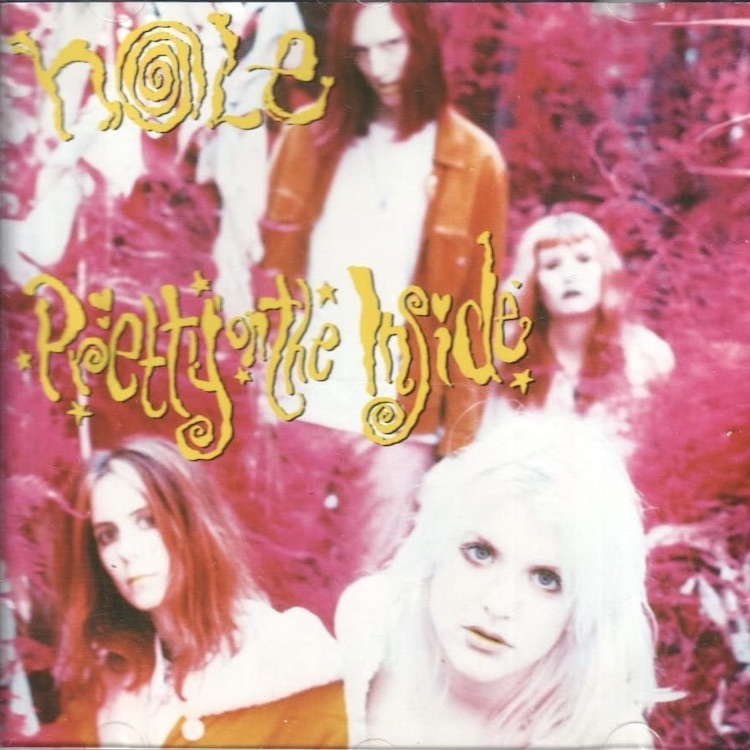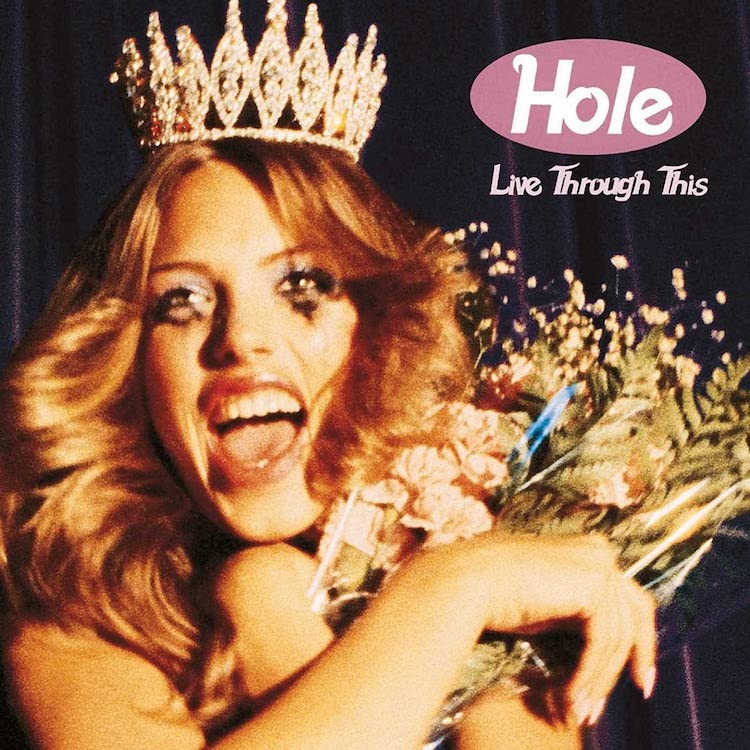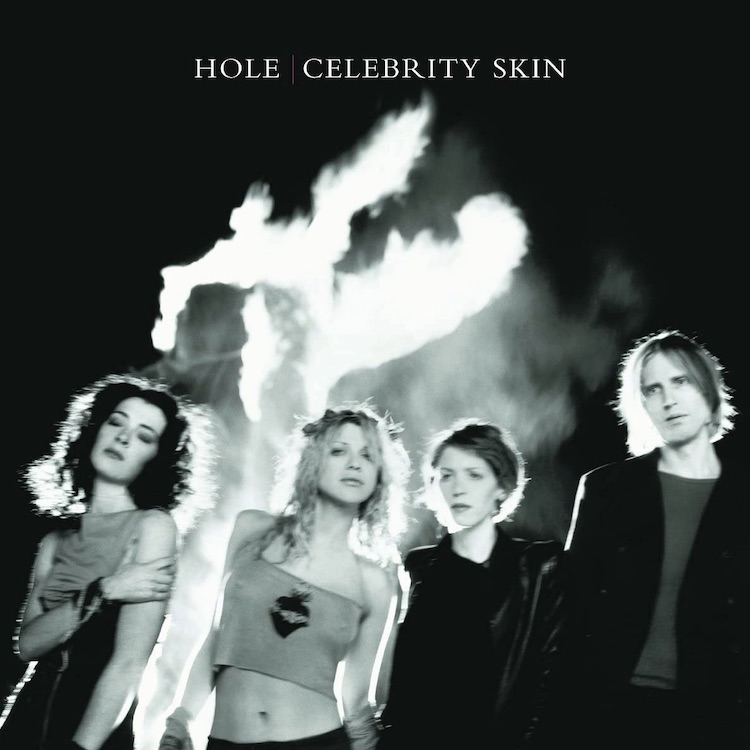Your essential guide to every Hole album
Courtney Love's finest work re-assessed

Formed in the fertile Los Angeles underground scene in 1989, Hole - or at least their force of nature leader Courtney Love - were always destined for greatness. Having served her alt. rock apprenticeship (briefly) fronting Faith No More, and in Pagan Babies (alongside future Babes In Toyland vocalist/guitarist Kat Bjelland and future L7 bassist Jennifer Finch), with Hole Love was the embodiment of female rage and expression, her band the uncompromising sound of female agency.
Willed into existence after lead guitarist Eric Erlandson answered a personal ad Love put in LA newspaper The Recycler - “I’m a musician looking for a band to play in. My influences are Big Black, Sonic Youth, and Fleetwood Mac”, they fanfared their arrival with two 45s - 1990’s Retard Girl on Sympathy For The Record Industry and 1991’s Dicknail on Sub Pop - both fatal collisions of abrasive noise and bruised pop that aligned them with Nirvana and Mudhoney.
With Love’s vocal exorcisms central, and recurring themes of sexual commodification and sexual violence in their work, their post feminist grunge pop also paralleled the riot grrrl movement, though Love was at pains to distance her group from the likes of Bikini Kill and Bratmobile, who had already formed friendships with Nirvana when Kurt Cobain and Dave Grohl lived in Olympia, Washington, pre-Nevermind.
Love's story, as everyone knows, would become entwined with that of Cobain, and, as a consequence, too often her achievements have been under-played if not entirely disregarded by misogynists in the media and music industry. But overcoming vicissitude and tragedy, Hole's history is one of self determination, survival and, for the most part, exceptional music.

Pretty On The Inside (Caroline, 1991)

Produced by Sonic Youth’s Kim Gordon and Gumball's Don Fleming, Hole's debut album is corrosive and seething, full of feedback and distortion and punk noise, partly influenced by the aforesaid two’s respective groups, also by Jesus and Mary Chain and on Mrs Jones, Patti Smith.
At this point Hole are very much a group, with Love and Erlandson joined by bassist Jill Emery and drummer Caroline Rue, although Love - cast as the transgressive anti-hero - is very much the focal point. Her raw, uninhibited howling on both her original compositions and the album's sole cover - an ominous reimagining of Joni Mitchell’s Both Sides Now under the title Clouds - are totally astonishing while her lyrics are as heart wrenching and uncomfortable as any prison poetry. “I've seen your repulsion and it looks real good on you/ I don’t want to live what you had, you have put me through,” she wails on Teenage Whore, the album’s UK indie Number 1 single. “My raw hand, my fever blister/Watch me, watch me, watch me disappear,” she screams on Babydoll.
It all adds up to a striking introduction to a fierce, fearless new voice on the US indie/alt. rock scene.
Live Through This (DGC, 1994)

Issued on April 12, 1994, just four days after Love's husband Kurt Cobain killed himself, and two month’s before bass player Kristen Pfaff died from a heroin overdose, Hole’s major label debut was always going to be overshadowed by the tragic events surrounding it.
But it stands as a great piece of art, full of fire and fury and explosive face-offs with misogyny. Love's lyrics are unapologetic in their honesty, exploring notions of gender exploitation, body fascism and motherhood, through the lens of postnatal depression and personal trauma: on I Think That I Would Die, addressing the fear of losing Francis Bean through a child welfare investigation, she cries “I want my baby/ Who took my baby?”
The music, meanwhile, put distance between Hole and their hardcore roots. Produced by Sean Slade and Paul Q Kolderie, recruited by Love due to their work on Radiohead’s Pablo Honey, it’s a far more commercial record, with the group - now completed by Pfaff, a classically trained cellist, formerly of Janitor Joe, and drummer Patty Schemel - grasping the possibilities of pop, influenced during its writing by classic Fleetwood Mac, REM's 12-string guitar jangle, and the immediacy of the then-still-unreleased Nevermind, with its stop-start, loud/quiet dynamics.
In the studio, Live Through This came together quickly and relatively easily, with killer songs coming one after another. There's Violet, about Love’s split with Smashing Pumpkins leader Billy Corgan - “Go on, take everything/Take everything/I want you to,” Doll Parts, all the more powerful and anguished for Love’s cracked vocal delivery, and the harrowing Asking For It which details her sexual assault while crowd surfing during a show: “Was she asking for it?/Was she asking nice?” Love spits. “If she was asking for it/Did she ask you twice?” Then there's the heart-breaking Plump and Miss World, both detailing body image and disordered eating, Love singing on the former “They say I’m plump/But I throw up all the time” and on the latter, “I am the girl you know, so sick I cannot try.”
Though the album peaked at number 52 in America, and at number 13 in the UK, the true impact of Live Through This would not be measured by chart statistics. One of the most essential albums to emerge from the '90s alt. rock scene, it's the sound of the glass ceiling breaking, the sound of an often cruelly vilified musician serving notice that she will not be silenced, will not be pushed back into the shadows.
Buy Live Through This
Celebrity Skin (DGC, 1998)

“Oh, make me over, I’m all I wanna be,” Courtney Love sings at the opening of Celebrity Skin, introducing Hole’s third album of the same name, one which would see the quartet - now featuring Melissa Auf der Maur on bass - transition from grunge contenders to major label rock stars.
The latest news, features and interviews direct to your inbox, from the global home of alternative music.
It could easily have turned out neither fish nor foul, but with rough edges buffed by Michael Beinhorn’s stadia production, and co-writes with old flame and long-time friend Billy Corgan full of classic rock riffs and poppy hooks and huge choruses - see the title cut and the gorgeous Malibu in particular - it successfully bridges Courtney’s self identities of scuzzy boho outlier and Hollywood starlet. Here though it's not Courtney’s personal life being dissected, but Los Angeles and the John Cheever-esque subject matter, the death of the American Dream, the surface glamour juxtaposed with the seedy underbelly.
Love was still grieving of course, and unlike Live Through This, Celebrity Skin's conception was difficult. But while it didn’t quite match Live Through This on an artistic level, it eclipsed it in terms of sales (breaking the Billboard Top 10, en route to selling 1.4 million copies in the US alone) and critical acclaim. For many, it remains Hole’s final word.
Nobody’s Daughter (Mercury, 2010)

After America’s Sweetheart, her 2004 solo album, Love resurrected the Hole brand for Nobody’s Daughter, with the singer now joined by Larrikin Love guitarist Micko Larkin, bassist Shawn Dailey and former Ozric Tentacles drummer Stu Fisher.
Five years in gestation, just over half the album is written by Love and Larkin, including highpoint Skinny Little Bitch, a vicious harangue that could have stepped straight off of Live Through This. The rest are penned by Love with either Billy Corgan or former 4 Non Blondes leader Linda Perry, who was heavily involved with America’s Sweetheart. The first named pairing provides the album’s other high with Pacific Coast Highway, which touching on Love's relationship with Cobain is lyrically disarming in its naked candour: “I knew a boy who came from the sea/he was the only boy who ever knew the truth about me... I knew a boy who left me so ravaged/do you even know the extent of the damage?” But what could be a journey into one woman’s heart of darkness, is marred by the inclusion of Perry’s Letter To God: clearly intended to be the album’s centrepiece, it unpacks body image and suicide but lacks authenticity.
